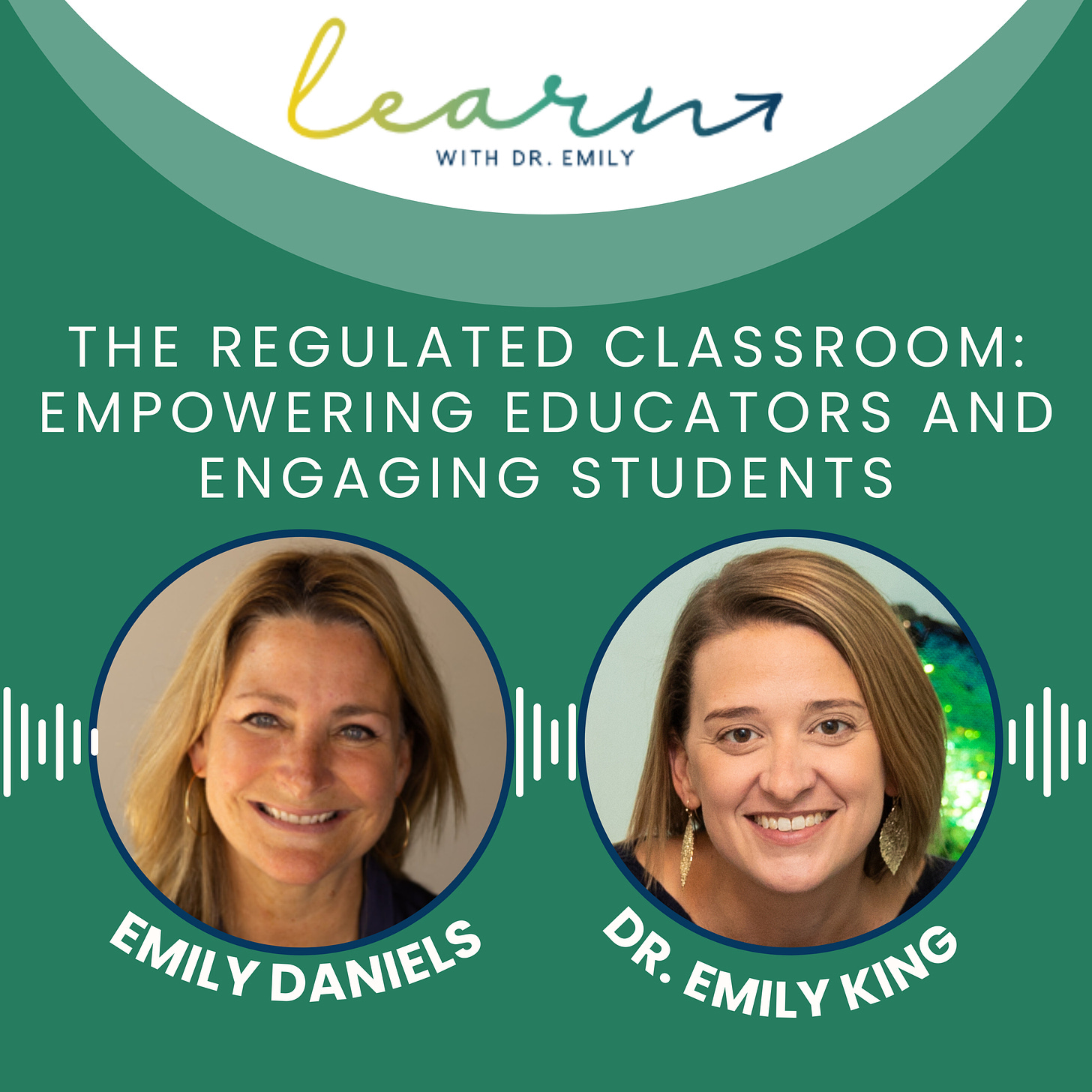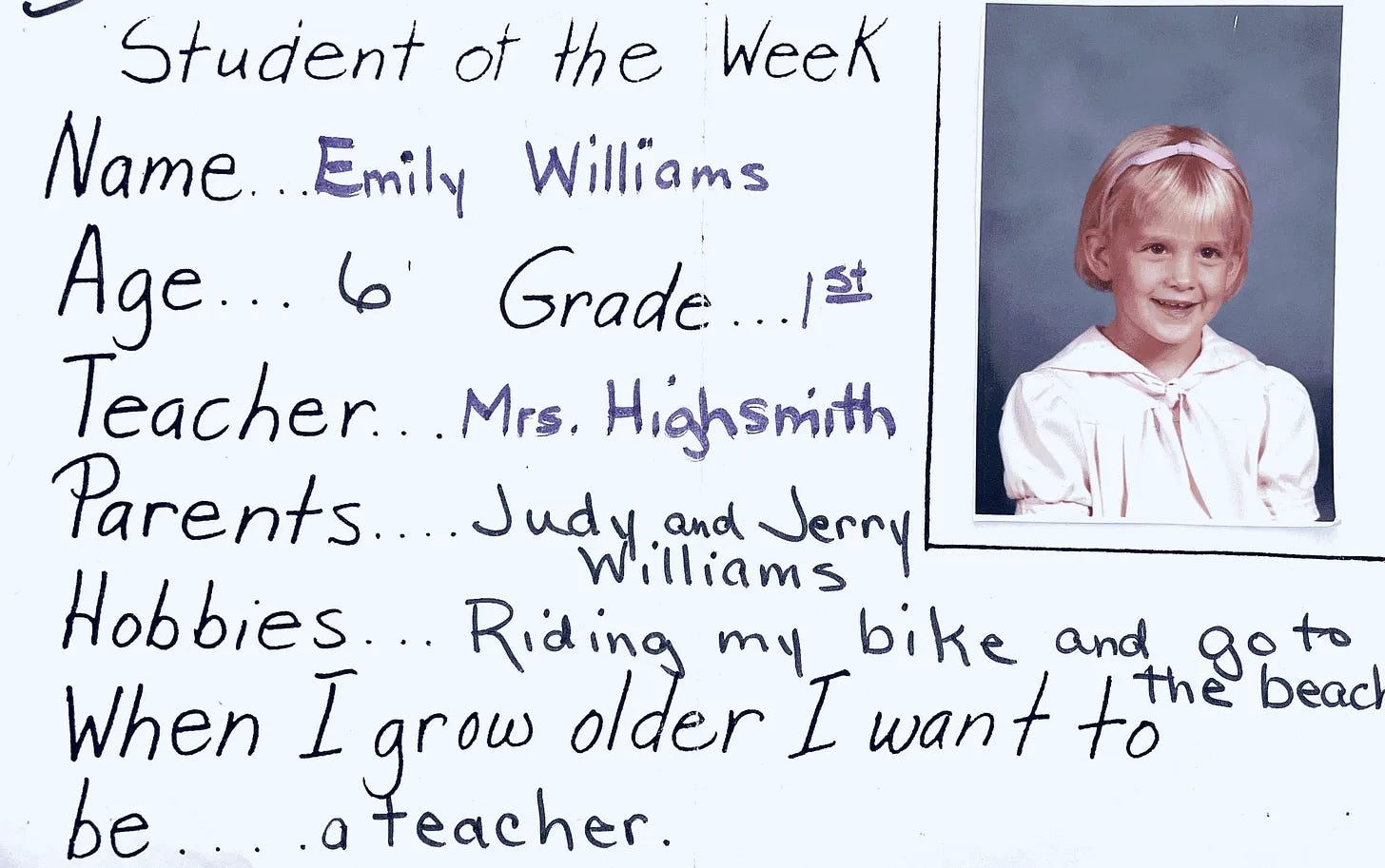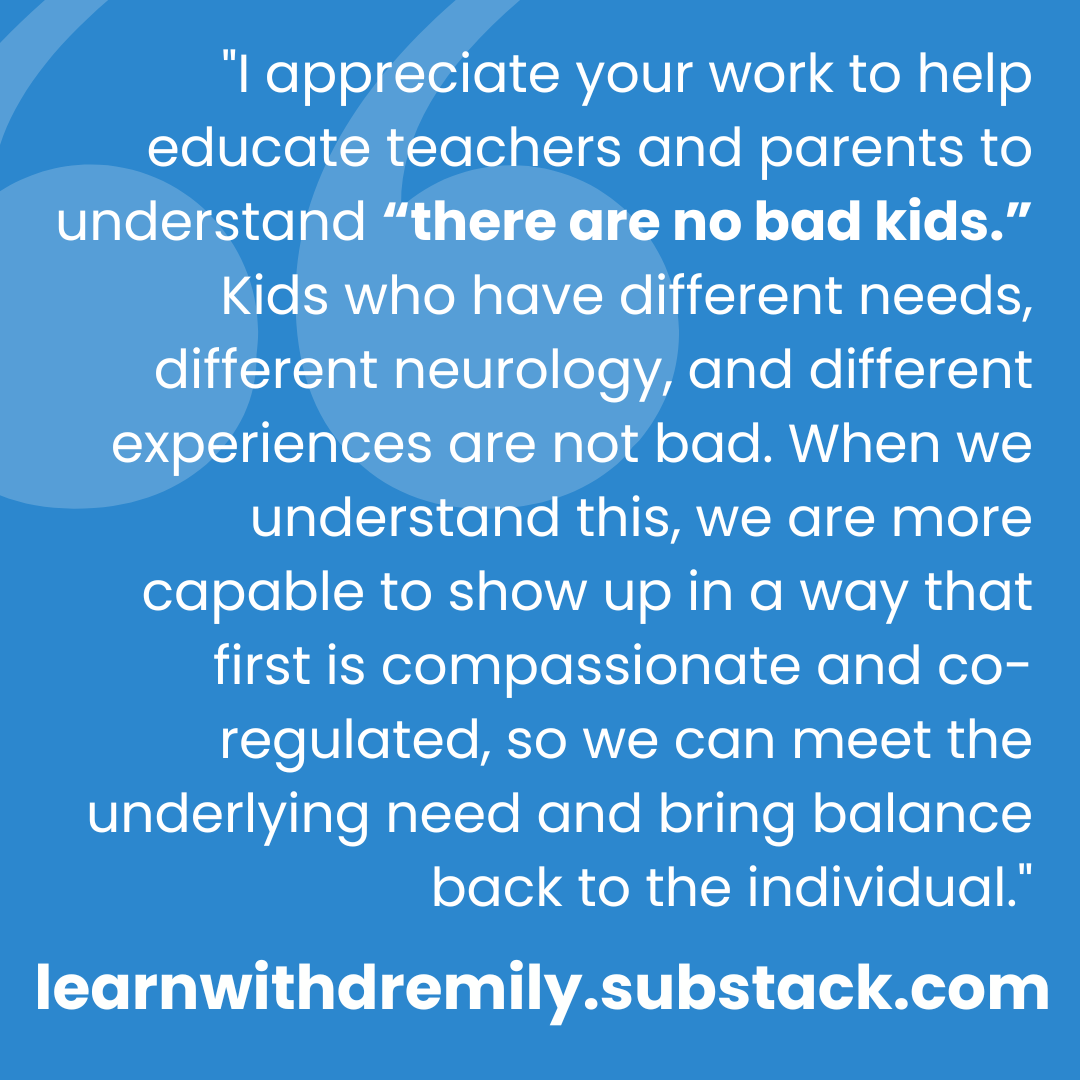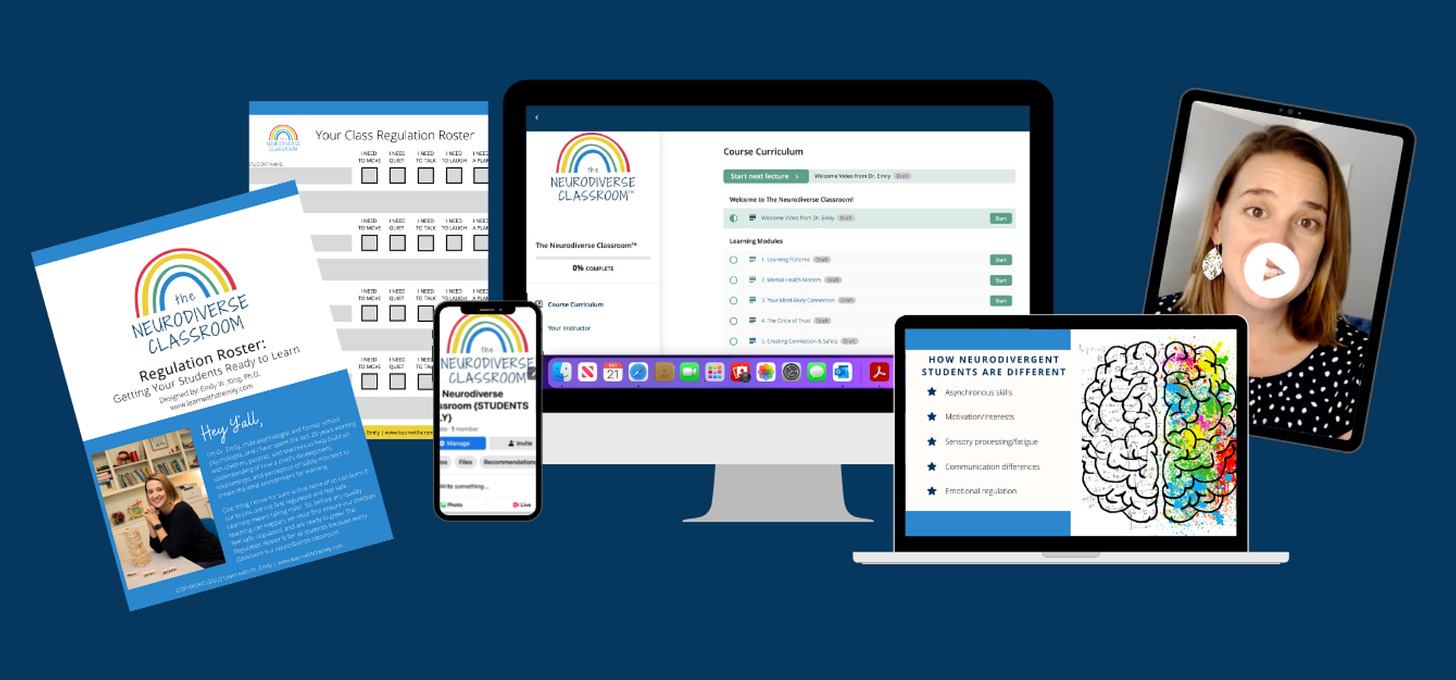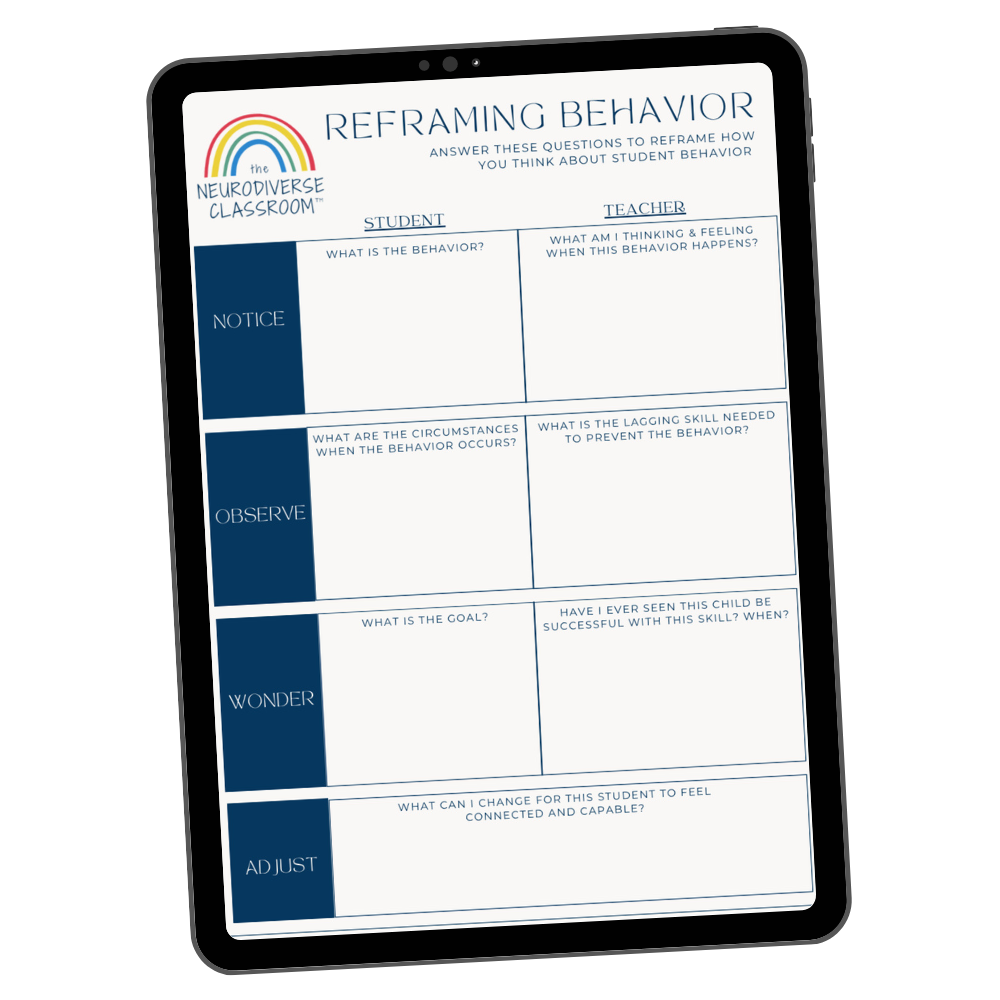Weekly Recap: [NEW PODCAST EPISODE] The Regulated Classroom with Emily Daniels
+ This week's personal essay feature for paid subscribers
Hey, Y’all,
I’m up early this Saturday morning reflecting on the community we’re building here. I’m proud of this space, where we are coming together as both parents and educators. Too many times I have talked with parents and educators who feel we are in an “us vs them” situation when it comes to communication surrounding how to best support our kids. I’m hoping we can put those days behind us and all lean into staying curious to learn from each other and our kids about what’s working (and what’s not working) for them.
This week, I highlight the work of my colleague, Emily Daniels, on the podcast. Emily created The Regulated Classroom, a curriculum for educators in how Polyvagal theory informs regulation for both teachers and students in the classroom. I found our conversation engaging and exciting as I know that no student can learn without first feeling safe and connected to the educator who is teaching them. I hope you find it helpful!
Let’s keep learning together,
~Dr. Emily
P.S. You’ll be receiving an email in the next few days about the next LIVE parent workshop on March 8th: Navigating School for Your Neurodivergent Child. Registration is open! All the info at the link.
On the podcast…
How can educators cultivate a classroom environment that's the most conducive to learning? What are the real secrets to a successful and regulated classroom?
This week on the podcast, Emily Daniels introduces the Regulated Classroom framework, which emphasizes practices like co-regulation, connectors, activators, settlers, and affirmations.
By understanding behaviors through past experiences and utilizing Polyvagal theory, educators can create a regulated space that supports student well-being and engagement.
Emily discusses how leveraging nostalgia, music, movement, and affirmations can create joyful and regulating experiences for all learners, including neurodivergent students.
On the blog this week…
What was school like for Dr. Emily?
Welcome to “Personal Essays,” a new section of my Substack where I will share my story for paid subscribers.
It's important for us to share our stories and in these essays you will learn more about me, why I do this work, and what topics are important for me to shine a light on as we learn and grow together.
I hope that sharing more of my story helps someone feel less alone.
Keep reading on how school shaped me at the link:
What people are saying…
Professional Development for teachers….
The Neurodiverse Classroom On-Demand Course
Believe it or not, teachers are already thinking about summer break and the extra time they will have, not only relax but also to get some professional development hours in. The Neurodiverse Classroom on-demand course is always available and gives educators forever access to keep learning on their own time.
Parents: You can purchase the course for your child’s teacher by putting their email address in at check-out.
Teachers: Ask your administrator now about funding for professional development to prepare you for the fall. I’ve got you!
In The Neurodiverse Classroom course you get:
Life-time access to the online course and any future revisions
Video lessons & downloadable worksheets will be immediately available for you to begin learning on your own time
Certificate of completion of 6 hours of professional development
Resource for teachers….
FREE Reframing Behavior Worksheet
If you’re looking for a more positive way to figure out student behavior, I’m here for you. Think of this resource as your brainstorm session before the Functional Behavior Assessment (FBA).
The Reframing Behavior Worksheet will help you:
Identify what’s going on underneath the behavior: Brainstorm what might be happening within the student’s nervous system that may have led to the behavior
Organize your observations: Make notes of what you notice in the student but also what you notice in yourself to determine if you need any additional support with this student
Brainstorm when students are successful: When we notice the moments that students CAN do things, we can apply lessons of what works into other areas of need to better support for them
Adjust the environment to meet needs: Rather than asking students to do all the changing to meet a goal, we can also meet the child with adjustments in the environment that can lift them closer to success




